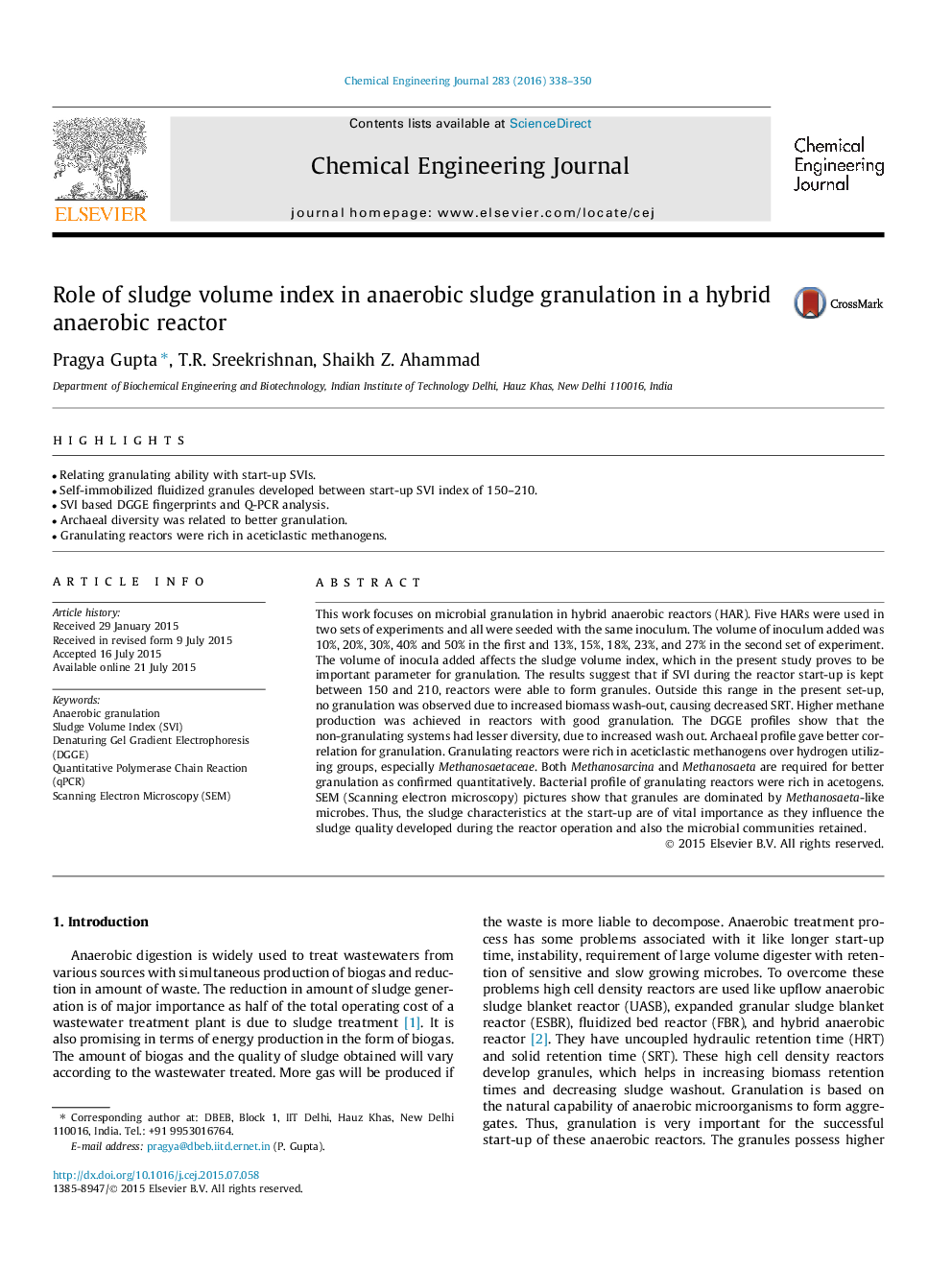| Article ID | Journal | Published Year | Pages | File Type |
|---|---|---|---|---|
| 6583638 | Chemical Engineering Journal | 2016 | 13 Pages |
Abstract
This work focuses on microbial granulation in hybrid anaerobic reactors (HAR). Five HARs were used in two sets of experiments and all were seeded with the same inoculum. The volume of inoculum added was 10%, 20%, 30%, 40% and 50% in the first and 13%, 15%, 18%, 23%, and 27% in the second set of experiment. The volume of inocula added affects the sludge volume index, which in the present study proves to be important parameter for granulation. The results suggest that if SVI during the reactor start-up is kept between 150 and 210, reactors were able to form granules. Outside this range in the present set-up, no granulation was observed due to increased biomass wash-out, causing decreased SRT. Higher methane production was achieved in reactors with good granulation. The DGGE profiles show that the non-granulating systems had lesser diversity, due to increased wash out. Archaeal profile gave better correlation for granulation. Granulating reactors were rich in aceticlastic methanogens over hydrogen utilizing groups, especially Methanosaetaceae. Both Methanosarcina and Methanosaeta are required for better granulation as confirmed quantitatively. Bacterial profile of granulating reactors were rich in acetogens. SEM (Scanning electron microscopy) pictures show that granules are dominated by Methanosaeta-like microbes. Thus, the sludge characteristics at the start-up are of vital importance as they influence the sludge quality developed during the reactor operation and also the microbial communities retained.
Keywords
Related Topics
Physical Sciences and Engineering
Chemical Engineering
Chemical Engineering (General)
Authors
Pragya Gupta, T.R. Sreekrishnan, Shaikh Z. Ahammad,
